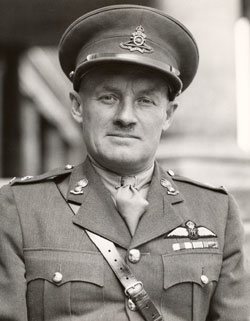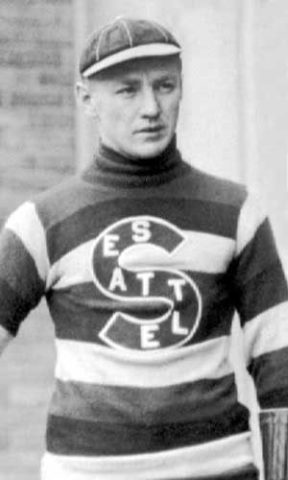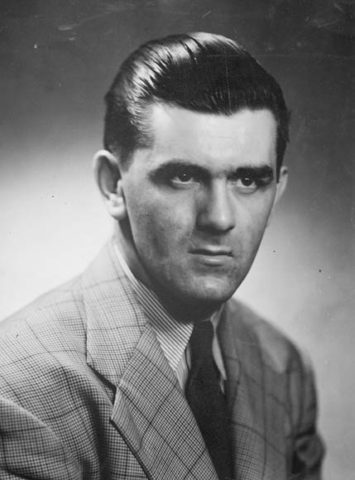With the recent developments of the Coronavirus affecting the day-to-day operations of sports, certain precautions are being made to protect its players, management, and fans. In saying this, the National Hockey League is no stranger to dealing with extraordinary circumstances. Since the NHL was founded in 1917, there have been a few situations where precautions have had to be taken in order to deal with tragedy, loss, or epidemic.
Looking at the past, there have been a few notable events that have affected the normality of hockey. The Coronavirus isn’t the first, nor will it be the last. Here are some events in the past that have threatened the NHL.
The First World War (1914-18)
While technically the NHL in its current form wasn’t founded until December 1917, organized hockey was still disrupted. The National Hockey Association (NHA) was the major governing body in hockey. The league featured future NHL teams like the Montreal Canadiens, Ottawa Senators, and Toronto Blueshirts (the players later joined the Toronto Arenas/Maple Leafs). (from ‘A Quirk of Canadian History: When War and Hockey Shared the Ice,’ New York Times, 12/30/2016)
Related: Canadiens History – The Very Beginning
While the NHA continued almost virtually undisturbed for the early parts of the war, 1917 marked a turning point in the participation of both the NHA and the players. The Canadian military entered a team in the league known as the Toronto 228th Battalion. The team was made up of soldiers from the Canadian army’s Northern Fusiliers Battalion, who were awaiting deployment orders.
The team did have some success and were well-liked, but were shipped to France in February. This was not without controversy, as a legal battle between the NHA and the Canadian Army followed soon after. The lawsuit alleged that the Battalion owed $3,000 for leaving the league midway through the season. This lawsuit, which was initially unsuccessful for the NHA, wasn’t settled until 1920, where the NHA and Canadian government reached a settlement agreement that was paid for in public money.
A few future NHL players and personalities also served in the war. Red Dutton, who fought in France with the Canadian Army, almost lost his leg in a German artillery attack. He survived the war and went on to play a hall of fame career and coach for the New York Americans. Conn Smythe, whose exploits were documented in Kelly McParland’s book, was shot down over Germany and captured as a prisoner of war.

When the NHL was founded the following year, it was almost a failing venture. The war in Europe was raging, and the talent pool was diminishing more than it already had. The competition from the Pacific Coast Hockey Association (PCHA) was threatening the operation of the NHL. As the PCHA had been seducing players from the NHA/NHL like Cyclone Taylor, Eddie Oatman, and Tommy Dunderdale since 1911. While the war ended before it could completely kill the NHL, it did make a significant impact and shaped how the NHL dealt with situations that could threaten hockey.
The Spanish Flu
In 1919, the NHL and the world were still recovering from the war. While veterans and hockey players who served in Europe were returning to Canada and the United States, a new threat dawned on the newly-formed NHL. The Spanish Flu, a deadly strain of the flu that was born from the trenches of the First World War, decimated the NHL and its players.
Related: What’s in a Name? The NHL’s ‘Original Six’
American and Canadian soldiers who were traveling home brought sickness with them. The 1919 Stanley Cup Final between the NHL champion Canadiens and PCHA champion Seattle Metropolitans was to be the ultimate show of how powerful the strain was.

During the Final, Montreal and Seattle were deadlocked in a 2-2-1 series. That’s when the flu stuck the Canadiens hard. Most of the roster, including star Newsy Lalone, came down with the flu.
“The great overtime games of the series have taxed the vitality of the players to such an extent that they are in poor shape indeed to fight off such a disease.”
The Toronto World, April 2, 1919
The seriousness of the sickness forced the NHL and PCHA to cancel the Stanley Cup Final. It was the only Stanley Cup to be canceled until the 2004-05 lockout. It was also a very tragic moment for the Canadiens, as the flu claimed the life of defenseman Joe Hall, and manager George Kennedy. The flu was not beaten until 1920. By the time the flu had passed, over 600,000 American lives were lost, alongside 50,000 Canadians. More Canadians and Americans died from the flu than in the previous world war.
The Second World War (1939-45)
Once again, the NHL was involved in another war that engulfed the world. Canada declared war on Germany and Italy in Sept. 1939, alongside the majority of the Allies. In the first few years of the war, the NHL didn’t see a huge change in the normal procedure, however, that changed with the United States’ entry in Dec. 1941.
The Canadian government was strongly considering shutting down the NHL. It was saved by the American government who pushed for the NHL to continue for the sake of both American and Canadian morale. It was stated that no able-bodied man should be exempt from military service to play hockey.
Canadiens star forward Maurice Richard did attempt to join the Royal Canadian Airforce in 1941 but was deemed unfit. His contribution to the war was his second job in a factory building war equipment during the NHL season. Smythe, who rejoined the army at age 45; was wounded again in 1944 during a German attack on an ammunition dump in France. Other players joined the war effort, including Sid Abel, Syl Apps, Doug Harvey, and Tiny Thompson as some of the most notable names.

Many players contributed to the war effort, however, none were more memorable than the “Kraut Line” of the Boston Bruins. The line of Bobby Bauer, Milt Schmidt, and Woody Dumart was named after their then-named hometown of Berlin, Ontario, (now Kitchener). All three men joined the Royal Canadian Airforce in Feb. 1942. In their final game against Montreal, they dominated, putting on a great show. In a great show of competitive spirit and Canadian-American relations, the trio was carried off the ice by Bruins and Canadiens alike.
With the majority of the resources of the Canadian and American governments going towards the war effort, the NHL saw a massive drop in quality. The NHL and its players served their countries admirably, and with great patriotism. The NHL carried on during the war, and it’s continued operation served as a huge boost to the morale of both civilians and military personnel alike.
All in all, the NHL has survived many instances where disease, tragedy, and loss has threatened its existence. While the Coronavirus may result in a change in the way the league operates for a period of time, hockey has survived much worse. Some regulations and standards may change, but the NHL will always carry through.